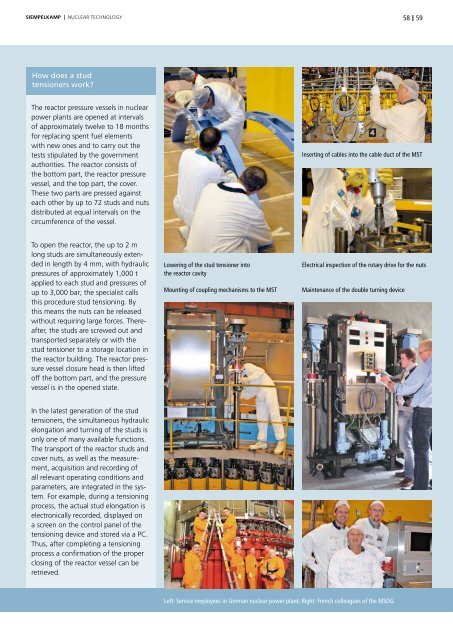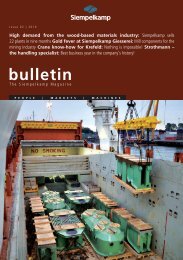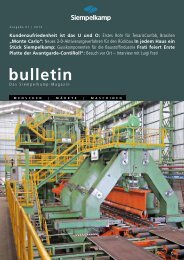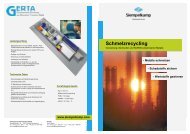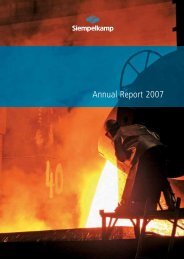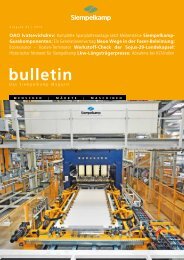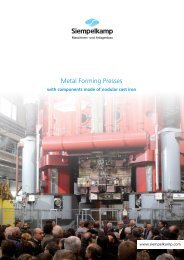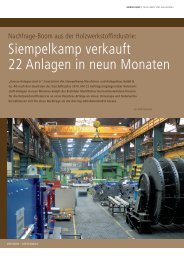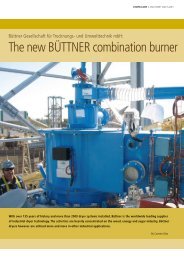Bulletin 1/2011 - Siempelkamp
Bulletin 1/2011 - Siempelkamp
Bulletin 1/2011 - Siempelkamp
You also want an ePaper? Increase the reach of your titles
YUMPU automatically turns print PDFs into web optimized ePapers that Google loves.
SieMpelkaMp | nUCLEAR tECHnOLOGy<br />
How does a stud<br />
tensioners work?<br />
the reactor pressure vessels in nuclear<br />
power plants are opened at intervals<br />
of approximately twelve to 18 months<br />
for replacing spent fuel elements<br />
with new ones and to carry out the<br />
tests stipulated by the government<br />
authorities. the reactor consists of<br />
the bottom part, the reactor pressure<br />
vessel, and the top part, the cover.<br />
these two parts are pressed against<br />
each other by up to 72 studs and nuts<br />
distributed at equal intervals on the<br />
circumference of the vessel.<br />
to open the reactor, the up to 2 m<br />
long studs are simultaneously extended<br />
in length by 4 mm, with hydraulic<br />
pressures of approximately 1,000 t<br />
applied to each stud and pressures of<br />
up to 3,000 bar; the specialist calls<br />
this procedure stud tensioning. By<br />
this means the nuts can be released<br />
without requiring large forces. thereafter,<br />
the studs are screwed out and<br />
transported separately or with the<br />
stud tensioner to a storage location in<br />
the reactor building. the reactor pressure<br />
vessel closure head is then lifted<br />
off the bottom part, and the pressure<br />
vessel is in the opened state.<br />
In the latest generation of the stud<br />
tensioners, the simultaneous hydraulic<br />
elongation and turning of the studs is<br />
only one of many available functions.<br />
the transport of the reactor studs and<br />
cover nuts, as well as the measurement,<br />
acquisition and recording of<br />
all relevant operating conditions and<br />
parameters, are integrated in the system.<br />
For example, during a tensioning<br />
process, the actual stud elongation is<br />
electronically recorded, displayed on<br />
a screen on the control panel of the<br />
tensioning device and stored via a PC.<br />
thus, after completing a tensioning<br />
process a confirmation of the proper<br />
closing of the reactor vessel can be<br />
retrieved.<br />
Lowering of the stud tensioner into<br />
the reactor cavity<br />
Mounting of coupling mechanisms to the MST<br />
Left: Service employees in German nuclear power plant; Right: French colleagues of the MSDG<br />
58<br />
59<br />
Inserting of cables into the cable duct of the MST<br />
Electrical inspection of the rotary drive for the nuts<br />
Maintenance of the double turning device


